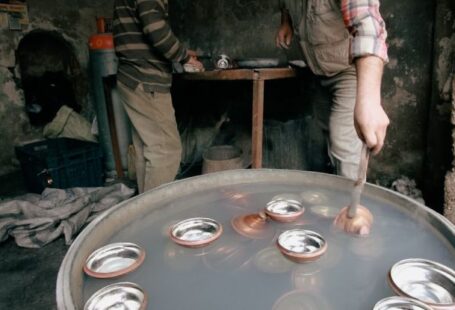The culinary legacy of Ancient Rome continues to influence the way we eat today, with many classic Roman dishes still popular in modern times. While traditional recipes have stood the test of time, chefs around the world are putting their own innovative twists on these ancient favorites. From pasta dishes to hearty stews, let’s explore some of the modern interpretations of classic Roman cuisine.
**Revamped Pasta Creations**
Pasta has always been a staple in Roman cooking, with dishes like Cacio e Pepe and Amatriciana being beloved classics. However, modern chefs are taking these timeless recipes to a whole new level by experimenting with different types of pasta and unique flavor combinations. For example, some chefs are using squid ink pasta to give dishes a striking black color, while others are incorporating non-traditional ingredients like truffle oil or smoked salmon for a contemporary twist.
**Innovative Roman Pizza Variations**
Pizza, though not originally Roman, has become a ubiquitous part of Italian cuisine, and Roman-style pizza has its own unique characteristics. While classic Roman pizza is known for its thin, crispy crust and minimal toppings, modern interpretations are pushing the boundaries with inventive flavor combinations and unconventional toppings. Chefs are experimenting with gourmet ingredients like figs, prosciutto, and arugula to create sophisticated and unexpected pizzas that pay homage to the flavors of Rome while appealing to contemporary palates.
**Creative Takes on Roman Street Food**
Street food has always been a vibrant part of Roman culinary culture, with dishes like supplì (fried rice balls) and panini being popular choices among locals and tourists alike. In recent years, chefs have been reimagining these classic street foods by adding unexpected twists and elevating them with high-quality ingredients. For example, some chefs are offering gourmet versions of supplì filled with truffle or mozzarella di bufala, while others are reinventing the classic panino with artisanal bread and locally sourced meats and cheeses.
**Modern Interpretations of Roman Stews**
Roman stews, such as the hearty and comforting Coda alla Vaccinara (oxtail stew) and Trippa alla Romana (Roman-style tripe), have been enjoyed for centuries for their rich flavors and satisfying textures. While these traditional dishes remain popular, chefs are putting a contemporary spin on them by incorporating global influences and modern cooking techniques. Some chefs are infusing Roman stews with exotic spices and herbs to create fusion dishes that blend Roman flavors with international flair, while others are experimenting with sous vide cooking methods to achieve tender and flavorful meat in their stews.
**Inventive Desserts Inspired by Ancient Rome**
When it comes to desserts, Roman cuisine is known for its simple yet delicious offerings like tiramisu and cannoli. Nowadays, pastry chefs are drawing inspiration from ancient Roman sweets and putting their own creative twists on these classic desserts. From deconstructed tiramisu served in a martini glass to cannoli filled with innovative flavors like matcha or lavender, modern interpretations of Roman desserts are as visually stunning as they are delicious.
**A Glimpse into the Future of Roman Cuisine**
As culinary trends continue to evolve, the future of Roman cuisine looks bright with endless possibilities for innovation and creativity. By honoring the rich culinary heritage of Ancient Rome while embracing modern techniques and ingredients, chefs are able to create dishes that are both nostalgic and cutting-edge. Whether you’re a fan of classic Roman fare or eager to try something new, the modern twists on traditional dishes are sure to delight your taste buds and inspire your culinary adventures.





